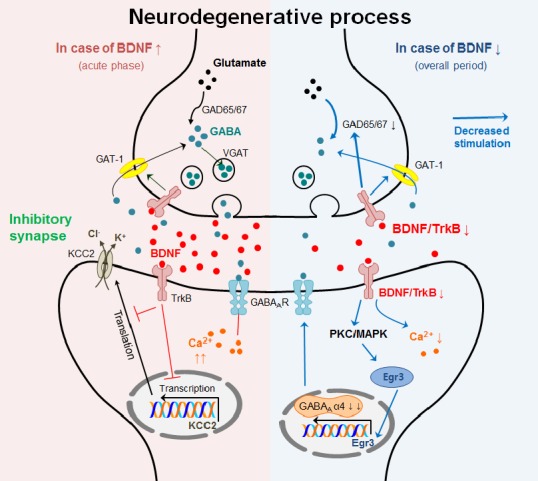Figure 1.

Summarized possible mechanisms between BDNF and GABAergic transmission during neurodegenerative process.
During neurodegenerative process, there is a close interaction between BDNF and GABAergic transmission. In inhibitory synapses, both increase and decrease in BDNF levels contribute to abnormal GABAergic transmission via alteration of GABA release and GAT-1-related transport of GABA, and abnormal regulation and decreased transcription of GABAAR. It may interrupt the balance between excitatory/inhibitory neurotransmission, attributing to the underlying mechanisms of neurodegeneration. BDNF: Brain-derived neurotropic factor; Egr3: early growth response 3; GABA: gamma-aminobutyric acid; GABAAR: GABA A receptors; GAD65/67: glutamic acid decarboxylase 65/67; GAT-1: GABA transporter 1; KCC2: K+-Cl− cotransporter 2; PKC/MAPK: protein kinase C/mitogen-activated protein kinase; TrkB: tropomyosin receptor kinase B; VGAT: vesicular GABA transporter.
